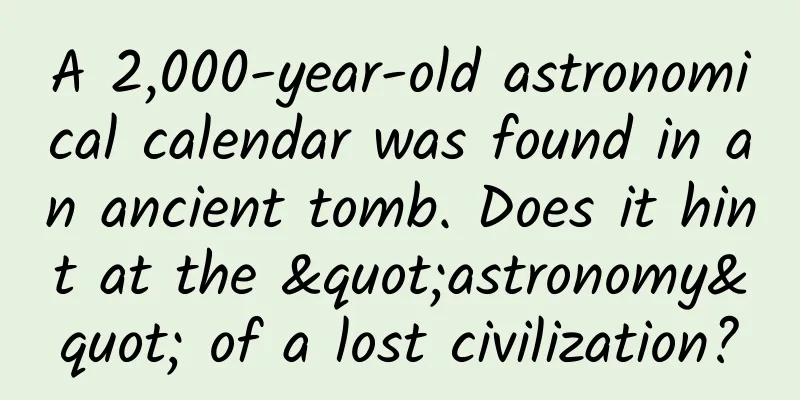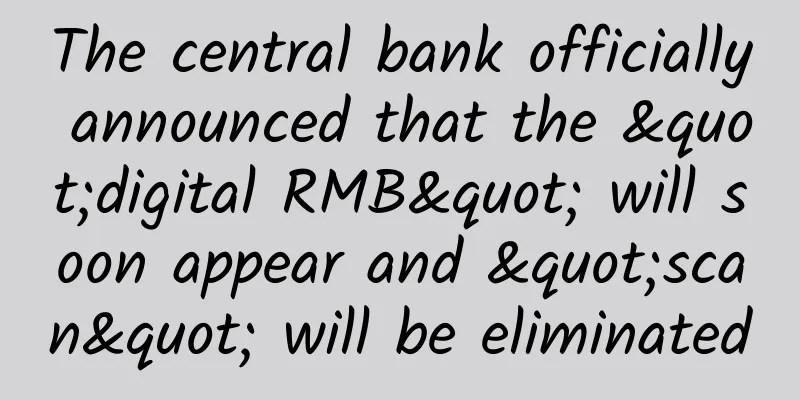A 2,000-year-old astronomical calendar was found in an ancient tomb. Does it hint at the "astronomy" of a lost civilization?

|
A 2,000-year-old "astronomical calendar" was discovered in an ancient Chinese tomb. This is the first time that a piece of paper related to the ancient calendar has been found in an ancient tomb. Each wooden slip of the 2,000-year-old astronomical calendar is marked with Chinese characters related to the traditional ten heavenly stems and twelve earthly branches. The perforations on their edges suggest that they were once tied together. (Image source: Chongqing Cultural Relics and Archaeology Research Institute) Chinese archaeologists have unearthed a set of mysterious rectangular wooden tablets associated with an ancient astronomical calendar. The artifacts were found in an unusually well-preserved 2,000-year-old tomb in the southwest of the country. The 23 wooden slips, about 2.5 centimeters wide and four inches long, have a Chinese character associated with Jiang'an on them. Dizhi, or "ten heavenly stems and twelve earthly branches" - China's traditional astronomical calendar, was established during the Shang Dynasty, which ruled from about 1600 to 1045 BC. Archaeologists believe one of the slips may represent the current year, while the other 22 could have been used to designate any specific year in the ancient calendar, according to a translation of a report on the China News website. The artifacts were found in a well-preserved tomb dating back about 2,200 years, unearthed earlier this year in the Wulana district of Chongqing, China. (Image credit: Chongqing Institute of Cultural Relics and Archaeology) There are circular perforations around the edge of each slip where they were once tied together. However, it is unclear how this set of calendar slips worked, an expert told Time Science. This is the first time such an item has been found in an ancient tomb, although the practice of writing on wooden strips or bamboo was common in China before the invention of paper. Golden Age The wooden slips and many other artifacts were discovered earlier this year in a tomb in Wulong district, an area about 870 miles (1,400 kilometers) southwest of Beijing, which is also managed by the Chinese government, archaeologists from the Chongqing municipal government told the Global Times. The tomb contains a written inventory of all the burial objects, which also states that it was built in 193 BC, during the Western Han Dynasty, which ruled much of China from 206 BC to 9 AD; followed by the Eastern Han Dynasty, which ruled until 220 AD, and together they are considered the "golden age" when many Chinese traditions were established. Archaeologists and university students began working at the site in Wulong District in March this year. (Image credit: Chongqing Cultural Relics and Archaeology Research Institute) Archaeologist Wang Meng said the tomb is the best-preserved wooden chamber tomb ever found in southwest China. Project leader Huang Wei told the Global Times that the tomb also contains more than 600 artifacts, including lacquerware bowls, boxes, jars and plates. It also preserves bamboo utensils and musical instruments, spears and cooking tripods made of copper, wooden statues, as well as pottery and bronze artifacts. In addition to the mysterious wooden slips, more than 600 artifacts were found in the tomb, indicating that a high-ranking official had been buried there. (Photo source: Chongqing Cultural Relics and Archaeology Research Institute) The hundreds of artifacts buried in the tomb include gorgeous artifacts such as pottery, copper, bronze, wood, bamboo and lacquerware. (Photo source: Chongqing Cultural Relics and Archaeology Research Institute) Archaeologists said that the tomb was not destroyed and most of the cultural relics were not damaged, although they needed to be cleaned after being underground for a long time. (Photo source: Chongqing Cultural Relics and Archaeology Research Institute) Mysterious Calendar Astronomer Ed Krupp, director of Griffith Observatory in Los Angeles and author of "Echoes of the Ancient Sky: Astronomy of a Lost Civilization" (Dover, 2003), who was not involved in the Wulong discovery, told Live Science that while the Jiang-Andy calendar is mainstream — it was used in Chinese astrology, for example — the wooden slips found in the Wulong tomb are unusual. Celestial calendar from 2,000 years ago Archaeologists say the newly discovered tomb in the Wuleng area is the best-preserved tomb from this period in southwest China. (Image source: Chongqing Cultural Relics and Archaeology Research Institute) In addition to recovering the artifacts buried in the ancient tomb, archaeologists also carefully mapped its interior and took photos. (Image source: Chongqing Cultural Relics and Archaeology Research Institute) "The wooden slips with calendar symbols are the first and only known example of inscription on such an object," he said in an email. But he said the set of slips did not appear to be used as a calendar; instead, they appear to have been used to reference any year in a 60-year calendar cycle. -3,000-year-old gold funeral mask unearthed in Chinese noble tomb -Complete Bronze Age town with elite tombs found in northern China -Bronze Age ice blade bone blade found in China If so, they would not be "books" but rather objects used to highlight a particular year. He said it was similar to a practice followed at a Taoist temple in Suzhou, China, where each year of the cycle was marked by a statue that specifically marked when it became current. Krupp said the Wulong tomb finds suggest a person of high status was buried there. "The artifacts buried with the deceased are numerous and very, very fine," he said. "This is rich, expensive material." By: Tom Metcalfe FY: He Danhuai If there is any infringement of related content, please contact the author to delete it after the work is published. Please obtain authorization for reprinting, and pay attention to maintaining integrity and indicating the source |
<<: A little-known virus spreads in South America: What is Oropouche fever?
>>: Far beyond human imagination! More than 500 million years ago, "sponges" swam on the seabed?
Recommend
The “strategic rifle” has not yet been officially put into service. What is the reason behind this?
...
Operations uncle: Personality labels became popular in the circle of friends overnight and WeChat was blocked again! So who achieved success?
Here's what happened: Back on July 14, Plato ...
Why smartphones aren't cool anymore
Smartphones are no longer cool. Although people a...
China Passenger Car Association & Anluqin: The new four modernizations index of passenger cars in March 2023 is 79.0
The Passenger Car New Four Modernizations Index, ...
Tongling Mini Program Production Company, how much does it cost to produce a digital mini program?
The main factors affecting the price of mini prog...
What can a public account do well in the early stages to accelerate user growth?
First of all, I want to say that the essence of b...
In 2020, Jinan will relax restrictions on settling in the city. How much is the price per square meter of housing in Jinan?
Jinan has been developing very well. Many young p...
Introduction to non-standard advertisements in OPPO App Store
FAQ-Non-standard Advertising Q1: Can I cancel the...
All you need to create high-conversion information flow promotion ideas is these few tricks!
What kind of creative has a high click-through ra...
Wuji Doudian no-source system operation course, store selection and listing of products, one-on-one guidance and practical operation
Wuji Doudian no-source system operation course, s...
In addition to paying, receiving money and adding friends, the QR codes you use every day also have these practical functions
QR codes are widely used. Payment, car rental, ad...
What channels are used to purchase traffic for mobile games? This article tells you!
I recently spent two weeks traveling around the c...
Douyin operation strategy for the food industry
1. Food Industry Development Background 1. Accord...
RRS Enterprise Account: Everyone is a Marketing Treasure [WeChat Enterprise Account Case]
1. “Renren Marketing” By using enterprise account...
100 offline lectures were held to popularize knowledge about charging piles! Energy Efficiency Electric did it!
With the vigorous development of the new energy i...









